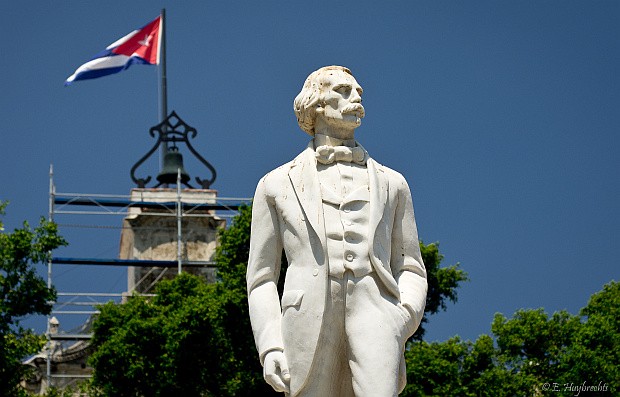Havana Cuba. — On February 27, 1874, Carlos Manuel de Céspedes, the Father of the Nation, died in the small town of San Lorenzo, located in the Sierra Maestra. There, deprived of his assistants and his escort, he hoped that the Spanish power would authorize his departure from Cuba, since he did not want to leave the island secretly, as a fugitive.
After his dismissal as president of the Republic in Arms, Céspedes had suffered humiliation and undignified treatment considering his hierarchy and role in the war for independence. The new government, headed by Salvador Cisneros Betancourthad sent him to San Lorenzo with an explicit order to the local prefect, José Lacret y Morlot, to take care of, or rather watch over, his illustrious guest.
For just over a month, Céspedes dedicated himself to visiting the guajiros in the area, teaching the children to read and write, and playing chess. He also wrote a lot in his diary and several sources say that he had an affair with a peasant widow, who shortly after had a son named Carlos Manuel.
On the day of his death, he was surprised by a small troop of enemy soldiers who were part of a much larger armed detachment. They had deployed an extensive and careful operation, as if they knew that someone important was in that area. Some historians think that the Spaniards arrived at Céspedes thanks to a denunciation.
The father of the independence uprising could not remain free, even if he had lost rank and prestige among troops unwilling to discipline and consensus. When the Spanish troops surrounded the San Lorenzo hamlet, they fired several shots into the air, ordering the Mambí chief to surrender. Céspedes responded with fire; then an enemy sergeant, who had managed to get closer than the rest, shot him at point-blank range.
Mortally wounded, the Father of the Nation fell down a ravine. His body was recovered by the Spanish military, publicly exposed in the Civil Hospital of Santiago de Cuba, and buried in a common grave. On March 25, 1879, one year after the conclusion of the Ten Years’ Warfaithful people exhumed his remains in the Santa Ifigenia cemetery, to give an honorable burial and save from oblivion the man who broke the chains of an entire town.
Céspedes’ few belongings were seized after the San Lorenzo battle, among them his diary, which one of the soldiers kept safe until the patriot Julio Sanguily bought it from him to deliver it to his brother Manuel, who left it in the hands of the journalist José de la Luz León. In 1981, shortly before his death, the guardian of the precious document asked his wife to deliver it to the historian Eusebio Leal Spengler, who saw to it that it was published.
The post Carlos Manuel de Céspedes: from the bell to silence appeared first on CubaNet.





